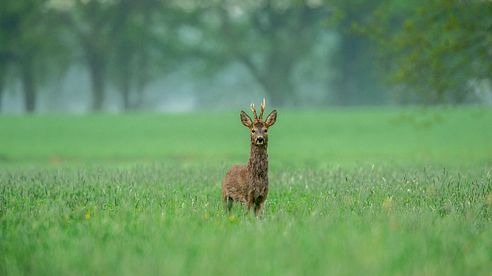The roebuck stalking season is open. Charlie Jacoby heads to Cumbria with two US hunting TV stars: Larysa Switlyk and Lindsay Christensen. They are out after bucks on the Greystoke Castle Estate and other ground managed by Steve Pymm of Cumbria Wild Game.
For Larysa Unleashed, go to http://www.larysaunleashed.com or http://www.youtube.com/user/LSwitlyk
For Extreme Huntress, visit http://www.extremehuntress.com
To go stalking with Steve Pymm, email wildgame@hotmail.co.uk
The Browning X-bolt and Nomad mounts are at hhttp://www.browning.eu
For Kite Optics, visit http://www.kiteoptics.om
This film was first shown in Fieldsports Britain episode 384. To watch the whole show go to http://Fcha.nl/fieldsportsbritain384
▶ Join the Fieldsports Nation and fund our fight for fieldsports in the media http://Fcha.nl/fieldsportsnation - for full details https://www.youtube.com/channel/UCfoEqIFtqfc6xBV185DQnBw/join for YouTube membership
http://www.patreon.com/fieldsportschannel for the same via Patreon
To become a more structural shareholder, visit http://fieldsports.envestry.com
Or simply support us, please, by donating: https://www.paypal.me/fieldsports
▶ Sign up for our weekly email newsletter http://Fcha.nl/register
▶ Fieldsports Shop http://fieldsports.shop
We’re proud to promote enjoyment of fieldsports and the countryside. There are three guiding principles to everything we do on Fieldsports Channel:
▶ Hunt, shoot and fish responsibly
▶ Respect the quarry
▶ Ensure a humane, clean and quick kill
Take part in nature. Join the Fieldsports Nation https://Fcha.nl
Risk warning: investments of this nature carry risks to your capital as well as potential rewards. Approved as a financial promotion by Envestors Limited. Which is authorised and regulated by the Financial Conduct Authority (No. 07236828.)
Why shoot deer?
There are more than two million red, roe, fallow, sika, muntjac and Chinese water deer in Britain’s countryside and semi-urban areas, the highest level for 1,000 years. Numbers have doubled since 1999, according to the Deer Initiative, the UK government’s deer agency.
Deer are an attractive and an important part of our wildlife. However, they have no natural predator in the UK so numbers must be sensibly and strategically managed to keep them in balance with their habitat and to prevent damage to crops, trees, woodland flora, gardens and other wildlife.
Deer cause £4.5 million-worth (Forestry Commission Scotland) of damage to plantations and other commercial woodlands in Scotland. Crop damage is estimated at £4.3m a year according to DEFRA, with the greatest damage on cereal crops in east and south-west England.
More than 8,000 hectares (Parliamentary Office for Science and Technology) of woodland with SSI status is currently in ‘unfavourable’ or ‘recovering’ condition due to deer impacts such as browsing and fraying. Deer can also influence the variety of wildlife in woodlands and other habitats by altering structural and plant species diversity. According to the University of East Anglia’s Dr Paul Dolman, that has resulted in a 50% decline in woodland bird numbers where deer are present, impacting particularly on nightingales, blackcaps, chiffchaffs and warblers.
Deer are susceptible to Bovine TB and may be responsible for the transmission of TB to cattle. They are also the likely driver behind the UK’s increasing tick population (Scharlemann et al 2008).
Happily, venison is a delicious meat. It is wild, natural and free range, and – almost fat-free – it is one of the healthiest meats available today. Results from research commissioned by the Game-to-Eat campaign (Leatherhead Food International Research 2006) suggest that there are real health benefits to eating game. Venison is high in protein, low in saturated fatty acids and contains higher levels of iron than any other red meat.
 Zwei Rehböcke liegen im Feuer! Two Roe bucks dead in the tracks!
Zwei Rehböcke liegen im Feuer! Two Roe bucks dead in the tracks!
 Roebuck Stalking: The Essentials
Roebuck Stalking: The Essentials
 DIY - Der Feldbock-Magnet
DIY - Der Feldbock-Magnet
 Faustregeln zum Ansprechen von Böcken
Faustregeln zum Ansprechen von Böcken